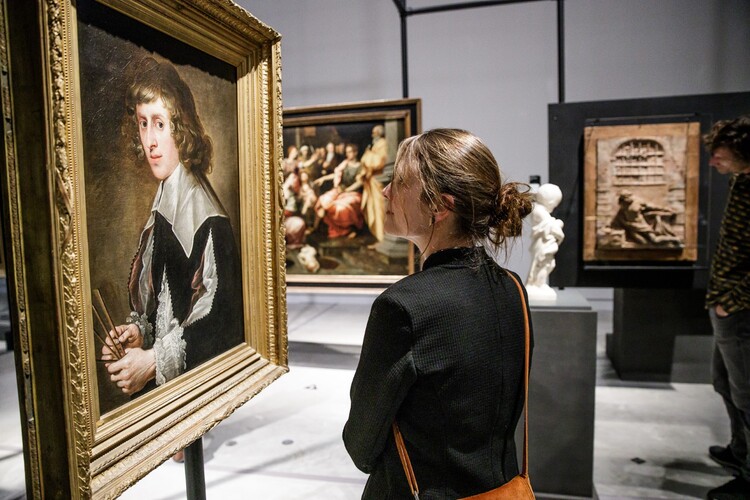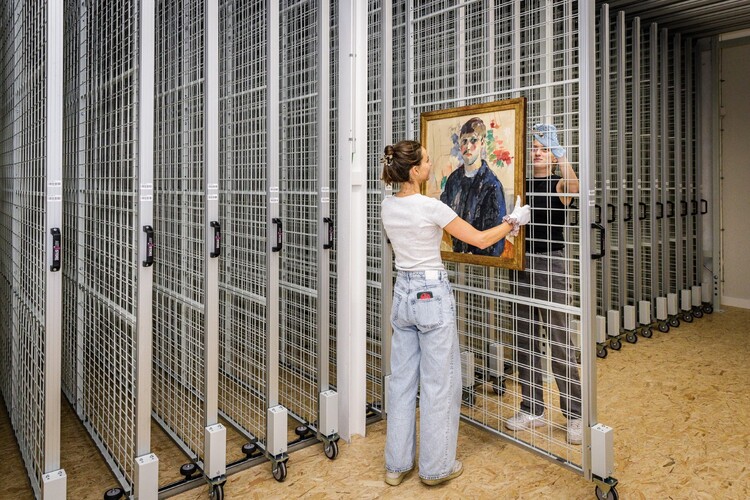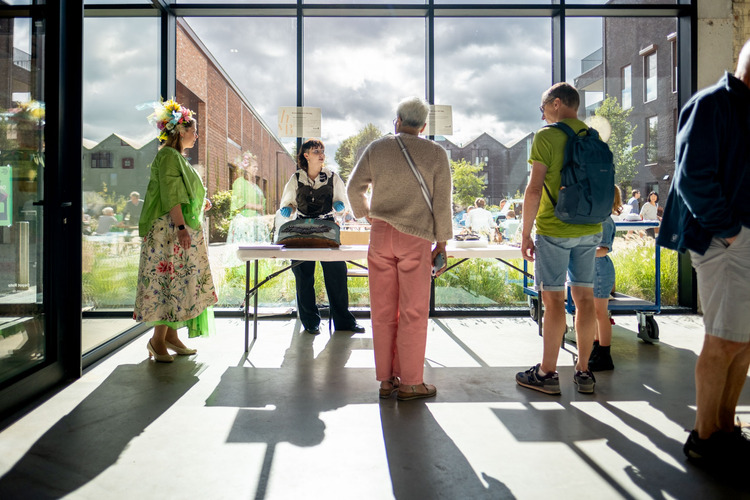
Museum Collection
The Hof van Busleyden museum collection has grown organically and in historical significance over the centuries. Today, the museum collection runs to a diverse assembly of approximately 24,000 objects. The Mechelen collection consists of several sections and sub-collections. The majority of the collection is held at the Depo Rato heritage warehouse.
Core Collection
The Hof van Busleyden museum collection contains a large number of works from the Burgundian and early Habsburg periods. These include an extensive collection of Mechelen alabaster and polychrome woodcarvings, early prints of works by Rembert Dodoens and Abraham Ortelius and rhetorical society emblems. The collection also contains Burgundian masterpieces such as the series of Enclosed Gardens, a tapestry depicting The Battle of Tunis by Jan Cornelisz Vermeyen, the Mechelen Choirbook and paintings by Michiel Coxcie, Pieter Coecke van Aelst, Hans Bol and Jan van Battel.
Furthermore, as the Baroque centre of the Catholic Church, Mechelen has an extensive collection of Baroque paintings, tapestries and sculptures. Owing to their strong Catholic associations, these objects belong not only to the Hof van Busleyden museum collection but also to the eight historical churches of Mechelen. The museum collaborates closely with the churches to improve access to these collections and make them available for research and exhibitions. The artists include names such as Lucas Faydherbe, Peter Paul Rubens, Maria Faydherbe, Nicolaas van der Veken, Jan Frans Boeckstuyns, David Vinckboons, Daniël Seghers and Lucas Franchoys.

Fine Arts
In the fine arts, the city possesses an extensive collection of sculpture. This collection shows the evolution of this art form in Mechelen and includes the renowned Mechelen dolls or poupées de Malines and the distinctive works in alabaster.
The collection of paintings is extensive and holds significant documentary value. Many of the collection's artists are lesser-known and some are anonymous masters. Some pieces are also of particular importance to the city's historical narrative and include iconographies, historical scenes, portraits, cityscapes and interiors.
In addition to paintings, the collection includes drawings, maps and engravings. Among them we find graphic works by 20th-century artists, such as the extensive collection of drawings and watercolours by Alfred Ost. Finally, the museum also possesses around 300 contemporary art objects, primarily in the form of drawings and paintings.

Historical Objects
The historical collection contains objects reflecting the history of the city. The oldest objects go back to the pre-historical period (flint, stone, fossils, pottery, metal items, coins, figurines, bones, fragments). There are also objects, architectural fragments, pottery, metal artefacts, coins and fragments from the Gallo-Roman era. The urban collection includes architectural fragments, pottery, coins, tokens, tiles, seals and manuscripts from the 13th, 14th, 15th and 16th centuries. From the 17th and 18th, centuries the collection comprises stained glass windows, pottery, moulds, seals, medals, manuscripts, punitive instruments, old measures and weights, flags and banners. Finally, the museum preserves more recent objects from the 19th and 20th centuries, such as architectural fragments, stained-glass windows, pottery, tokens, medals, coins, seals, moulds, manuscripts, utensils, flags and banners.
The collection also includes objects related to guilds and crafts (such as patron saints, furniture, coins, pottery, textiles, coats of arms). The collection of folk art includes a small shop, a pharmacy, a folk tavern, an old printing press, a puppet theatre and items from the original sections of the folklore museum.

Collection of Arts and Crafts
The collection of arts and crafts is of particular value. It contains high-quality products from the old and new arts and crafts industries of Mechelen, which garnered recognition for the city far beyond the national borders. The collection of gilt leather, for example, is of historical importance as Mechelen was the primary centre for gilt leather production in the Low Countries. Mechelen lace also had a reputation that reached around the world.
Collection Profile
In 2023, the collection was re-profiled with a view to improving its management. The acquisition of new pieces for the collection focuses on heritage that falls along two thematic lines, i.e. 'Mechelen as the court and capital of the Burgundian Renaissance ' and 'Mechelen is the baroque seat of the Catholic Church in the Southern Netherlands'. Through these two thematic lines the museum aims to valorise the existing collection while at the same time expanding, deepening and strengthening it.
Read the Collection Plan set out by Museum Hof van Busleyden (PDF)

Depot Rato
The brand-new Depot Rato heritage warehouse in Muizen is where centuries of Mechelen's history are stored. It contains thousands of art works, archaeological finds, historical objects and the many books in the city's possession. Museum Hof van Busleyden is responsible for the depot and coordinates its operation and accessibility.
Heritage Preservation in Depot Rato
The heritage warehouse ensures the safe preservation of the museum's collection. It also has a restoration workshop in which experts repair damaged objects and restore them to their original condition. The building includes a processing area for archaeology, specific treatment rooms, a consultation space, a multi-purpose room for training and volunteer work and a large storage area for the public library collection.
The following organisations (partially) house their collections in Depo Rato: Stadsarchief Mechelen, Het Predikheren, Projecten & Monumenten Mechelen and Museum Hof van Busleyden. Heritage Cell Mechelen manages the volunteer work and serves as a point of contact for associations working with intangible heritage.
Visit Depot Rato
The depot is open to the public for guided tours, events and public days.
